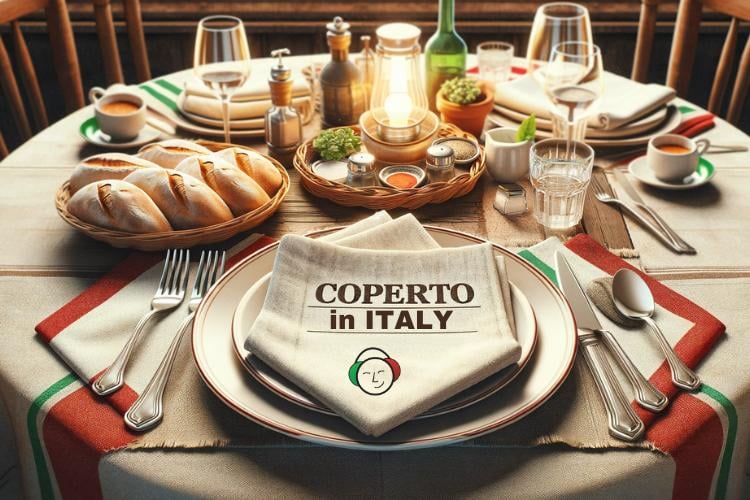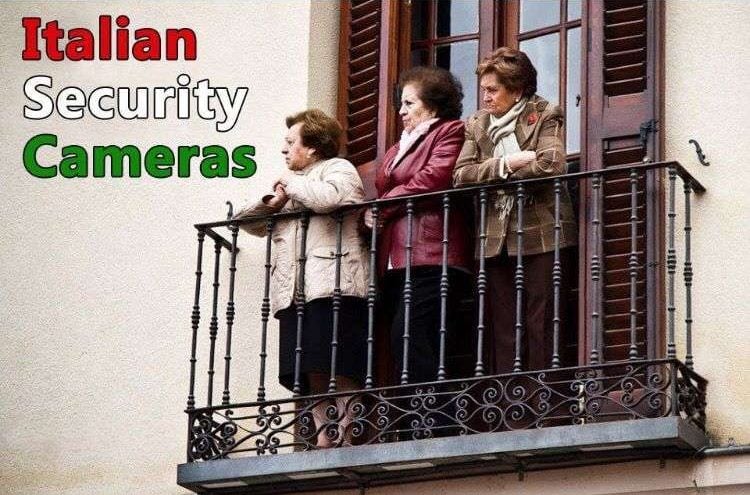What is Coperto in Italy? Cover Charge and Tipping Guide
Hey there! It’s Max here, your Italian culture aficionado. Today, let’s chat about coperto in Italy. Imagine sitting in a cozy restaurant in Italy, and you spot the word coperto on the menu.
What’s that, you wonder? Let me take you through it in this short guide!
What is Coperto in Italy?
Coperto in Italy stands for the per-person cover charge that diners are required to pay at restaurants throughout the country.
The term coperto comes from ‘copertura’, literally meaning ‘coverage’, and includes the use of table linen like the tablecloth and napkins, silverware. If you’re dining indoors, it sometimes even includes a charge for the bread placed on the table.
Play the audio below to learn how to pronounce coperto in Italian.
The Origin of Coperto

The practice of charging coperto dates back to the Middle Ages when one had to pay to be seated at a table and served.
While some argue it’s a tourist trap designed to get a few extra euros from unsuspecting travelers, many assert it’s a deep-rooted part of the Italian dining culture, respected by locals and tourists alike.
Back in the day, travelers would bring their food to inns, buying only drinks. Innkeepers, thus unable to sell their meals, started charging for the used space (posto coperto), cutlery, and plate usage.
Is Coperto Legal in Italy?

Absolutely! Coperto might sometimes raise eyebrows with its varied rates, but it’s totally legal. Italian law requires menus and checks to clearly state these charges.
Coperto charge shows up at the end of the meal, printed on your restaurant checks. It is typically a flat rate, charged per person, and legally, must be printed anywhere on the menu.
Interestingly, the practice of charging coperto is banned in the Lazio region (where Rome is located).
Common Misunderstandings: Coperto is Not a Tip
The main misunderstanding about coperto is thinking that it goes to the waiter as a tip. However, coperto is not a tip. This can be a shock to those who, after generously tipping the waiter, realize they have been double-charged.
Another common misunderstanding is that coperto and servizio are the same; they are not. Stay tuned for a deeper dive into servizio coming up later in this piece.
Tipping vs Coperto: How Are They Different?

In Italy, people often get confused between tipping and coperto. Here is a quick guide to help you differentiate between the two.
What Does Tip Mean in Italian Restaurant Etiquette?
In Italian restaurant tipping etiquette, the tip, or ‘la mancia’, is a voluntary amount left for the waiter to show appreciation for good service. However, tipping in Italy isn’t as obligatory as in some other countries.
Notably, waiters in Italy are paid a proper salary, contrasting with places like the U.S., where tips often make up a significant portion of a waiter’s income. This difference in wage structures underscores the less pressing nature of tipping in Italian dining culture.
Suggested Read: Richest Cities in Italy: Top 10 Wealthiest Places to Live
Does Coperto Replace the Need for Tipping?
Coperto does not replace the need for tipping. Diners may still leave a tip for the waiter if they find the service exceptional, but it is entirely up to them. Remember, the coperto goes to the restaurant, not the waiter.
Understanding the Impact of Service Charge on Tipping
A service charge, also known as ‘servizio‘ in Italy, is a percentage added to the total bill for the service provided. In situations where servizio is included, you can forgo the tip at the end of the meal as it already goes to the servers.
How is Coperto Calculated?

Calculating coperto in Italy can be a daunting task due to its variance from restaurant to restaurant. Here’s an attempt to decode it.
Is Coperto a Fixed or Variable Charge?
While some restaurants charge a fixed coperto per person, others may have variable rates depending on the location, the time of day, whether you sit at the tables or stand at the bar, and even the type of establishment.
How Much Should You Expect to Pay for Coperto in Italy?
In Italy, the coperto can be as little as €1, €2, or up to €5 per person. However, it can occasionally go as high as 10 euros per person (or more), especially in those touristy spots, such as Florence, Venice, or the Amalfi Coast.
In tourist hotspots like Venice and some restaurants in Positano, some visitors have faced steep charges, up to €25! Since there’s no legal cap on this fee, restaurants have the freedom to set their rates.
Pro Tip: If you ever see a €25 coperto charge on the menu, run. They’re ripping you off.
How to Spot Coperto Charges on Your Check?
Coperto must be printed on the menu and is usually itemized on the bill to avoid any misunderstanding.
What is Servizio Charge in Italian Restaurant Bills?

Apart from coperto, another charge that you will often come across is ‘servizio‘. Servizio is a service charge that goes to the staff, unlike coperto. However, it’s not compulsory and isn’t charged in all restaurants.
The history of Italy’s service charge, or servizio, in restaurant bills harks back to a time before employment contracts existed. Back then, restaurant staff were compensated based on a percentage of the orders and tables they managed.
Does Every Italian Restaurant Apply a Servizio Charge?
When visiting different types of Italian restaurants, be aware that not all apply a servizio charge. It is usually found in pricier establishments or touristy areas. Ensure you inspect your bill carefully before paying to avoid any unexpected surprises.
How to Handle Unexpected Charges at an Italian Restaurant
As a general rule, you should not find any additional charges besides the servizio and coperto. If you do, you might have been charged a tourist tax. If the fees seem irregular, feel free to question the establishment or even refuse to pay.
Suggested Read: Italian for Money: What is Italy’s Currency?
Understanding Italian Coperto: Scam or Tradition?

Many travelers often wonder whether the Italian coperto is a scam or a tradition. Understanding the historical context helps clarify this issue.
With roots traced back to the Middle Ages, it’s clear that the coperto is a part of the historical tradition of dining in Italy.
In summary, while it may feel like a tourist trap at first glance, remember that even locals pay coperto in Italy, meaning it’s not a scam but a customary practice.
Avoiding Overcharges: How to Have a Fair Italian Dining Experience
Ensuring a fair dining experience in Italy requires knowing beforehand how the restaurants can charge and understanding what each charge on your bill stands for.
Always remember to check your bill and know that you have the right to question any item you don’t understand.
Armed with everything you need to know about coperto and servizio, you’re all set for eating around Italy, diving into its divine culinary experiences without a moment’s hesitation.
Before You Go…
Craving more Italian delights? Discover the many enchanting ways to say delicious in Italian. Perfect for foodies wanting to savor Italy’s linguistic flavors!







